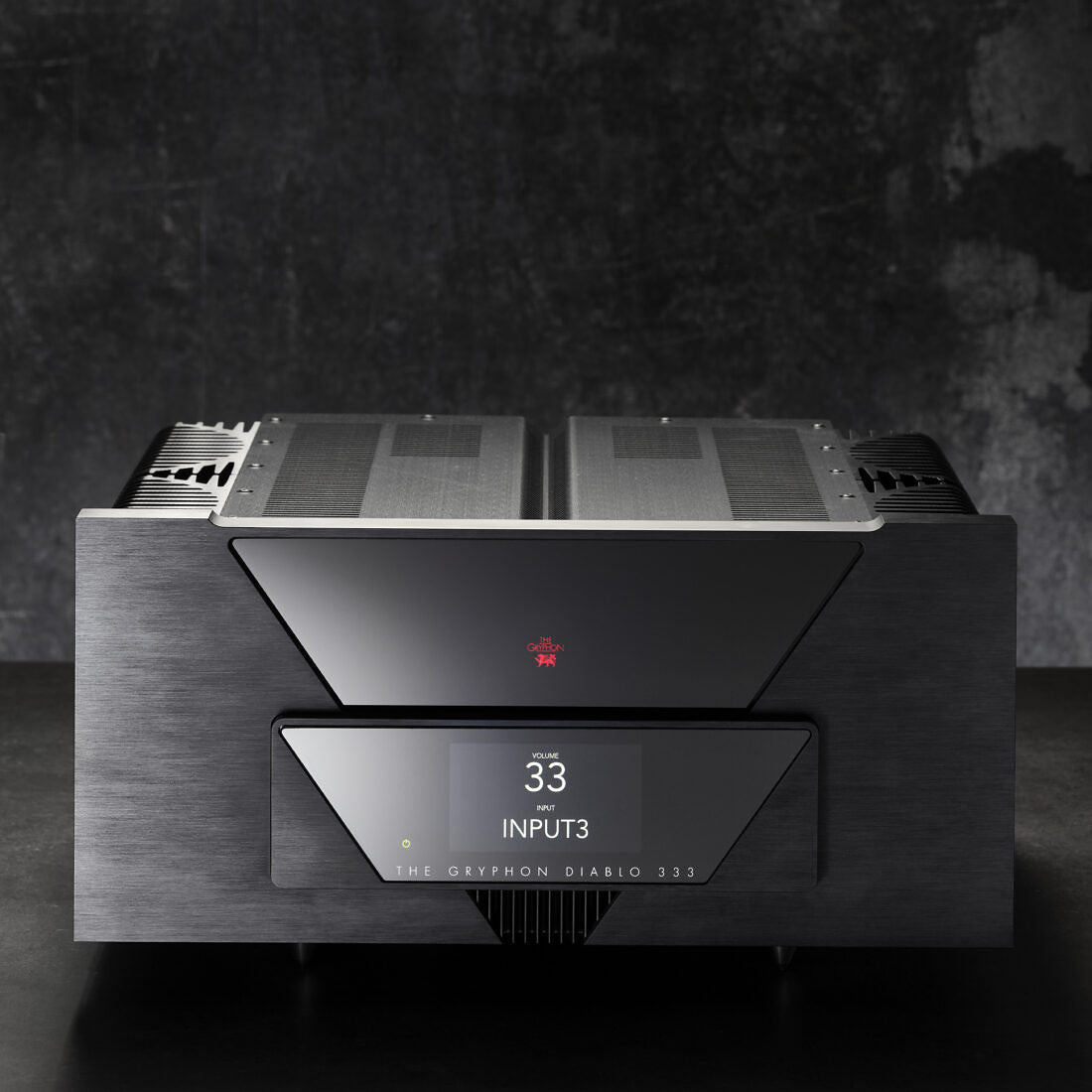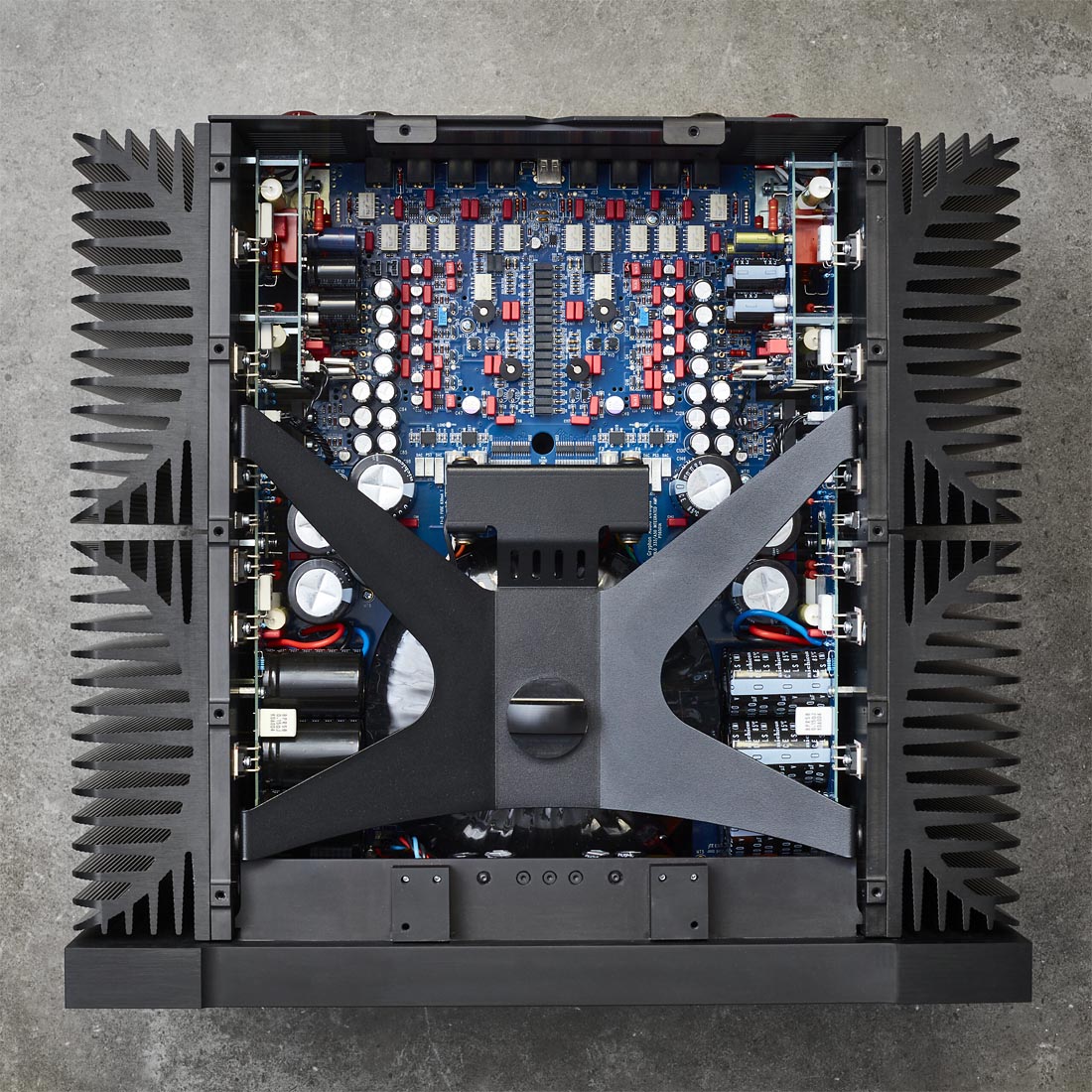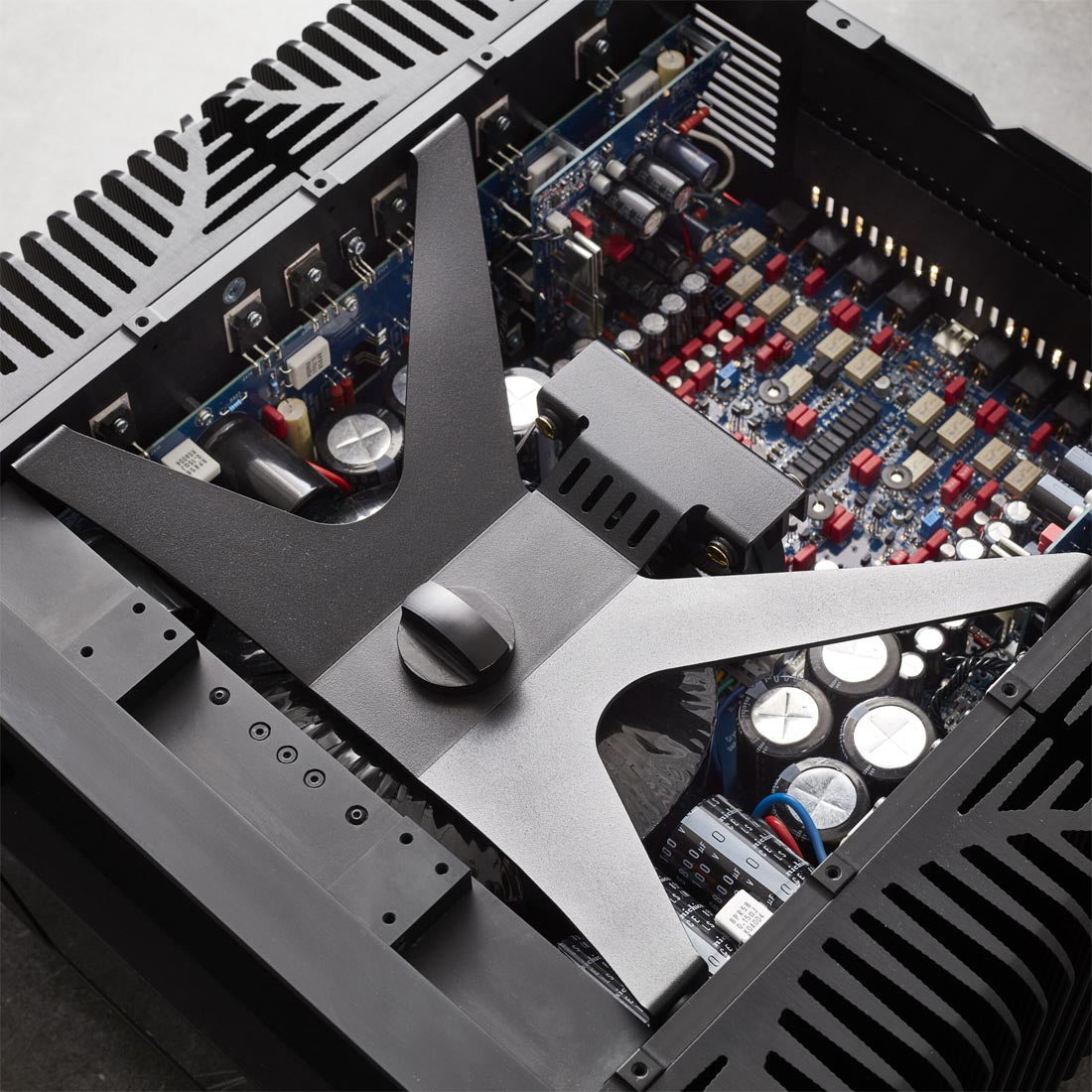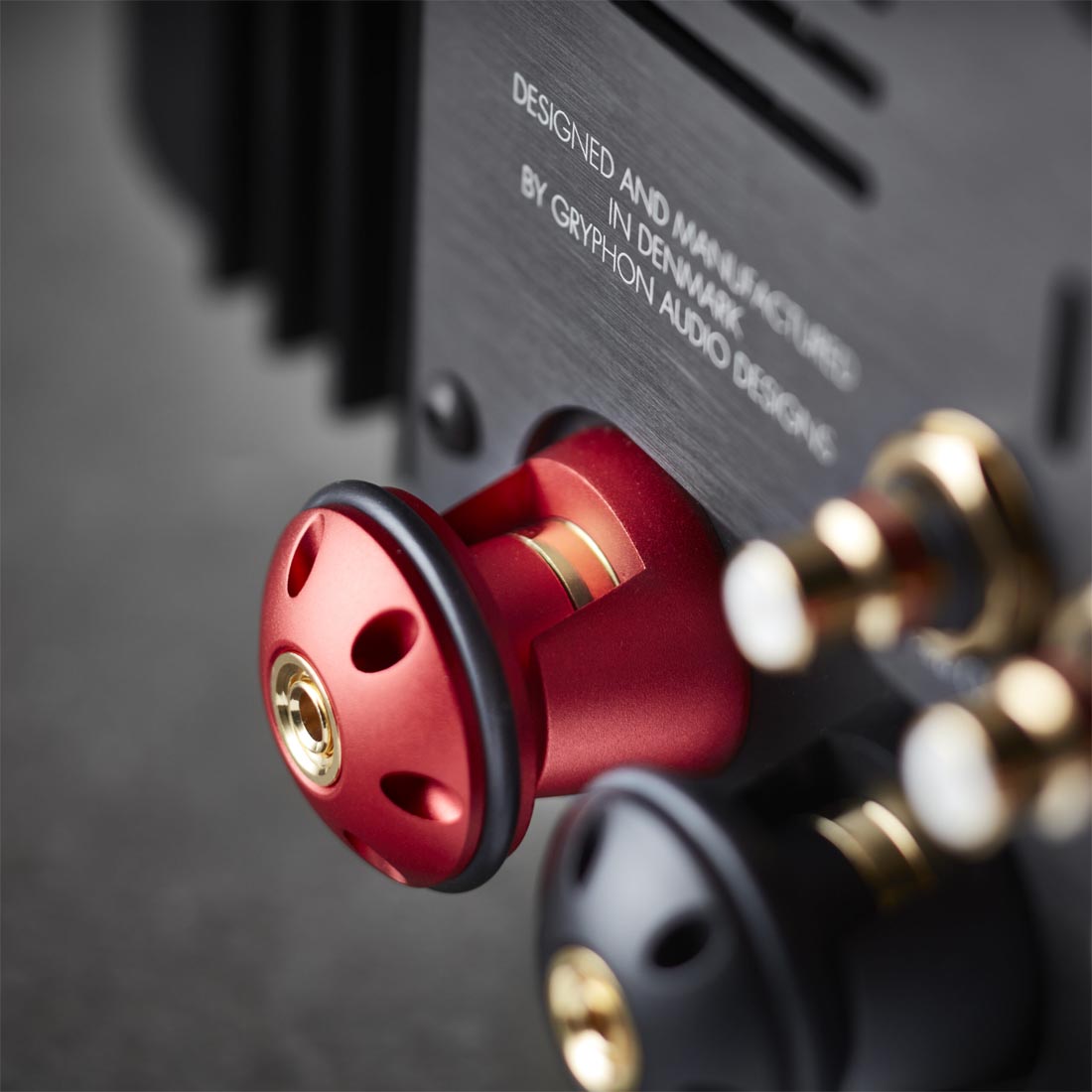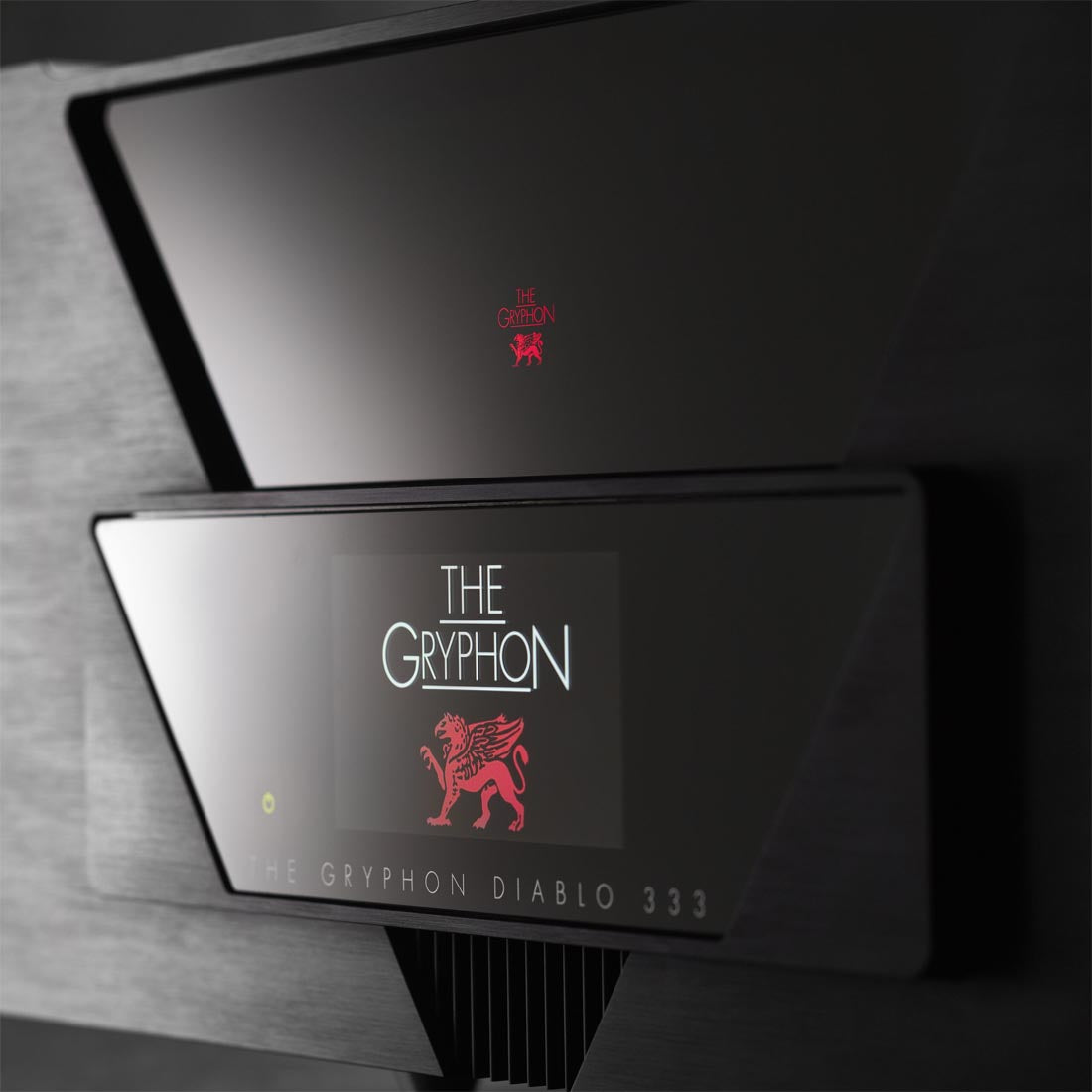Description
Gryphon Diablo333 Integrated Amplifier
Gryphon Audio Designs showcased the Diablo 333 integrated amplifier at the 2023 Munich High End trade fair, a successor to the Diablo 300 model from eight years prior. To surpass its predecessor's performance, the Danish company leveraged its expertise accumulated in developing the Commander preamplifier and Apex power amplifier. The result is a 10% increase in output power, improved musicality and performance, thanks to new ultrafast, low-capacitance pre-driven transistors. The configuration is true dual-mono, with no negative feedback, a signal path as short as possible, and minimal wiring. The final stage integrates 10 high-power transistors per channel, while the power stage employs dual Holmgren toroidal transformers. Furthermore, it utilizes four-layer molding with 70µm copper layers, conforming to MIL standards.
▲Features high-power outputs of 2 x 333W (8 Ω ) , 2 x 666W (4 Ω ) , and 2 x 1100W (2 Ω ).
Gryphon Diablo 333 Equipment Specifications
Gryphon Diablo 333
The Danish Gryphon Diablo 300, nicknamed "Big Pineapple," was first launched in 2015. Despite the passage of eight years, it still holds a prominent position in the sales charts for high-power integrated amplifiers. In addition to its high-quality materials and excellent craftsmanship, its inexhaustible output (300W x 2) is simply a dream match for low-efficiency speakers. Many current Gryphon preamplifier and power amplifier users, who cost millions of dollars, were once captivated by the "Big Pineapple."

The panel is equipped with a 4.3-inch TFT capacitive touch color display screen.
Inheriting the DNA of the groundbreaking Commander preamplifier, the Diablo 333, designed by Flemming E. Rasmussen, the founder of GREAT, boasts an even more elegant and refined design. The cleverly hollowed-out black aerospace-grade aluminum panel features a triangular 3D glass window housing a 4.3-inch TFT capacitive touchscreen color display, providing left and right channel balance and source input fine-tuning data. High-efficiency heatsinks, identical in design to those on the flagship Apex pure Class A power amplifier, are located on both sides of the chassis, significantly improving heat dissipation in the power amplifier stage. New vibration-damping feet, implementing Mechanical Grounding theory, are designed to quickly guide away resonance, echo, and pickup effects, and prevent feedback. In terms of connectivity, the Diablo 333 offers two balanced XLR and single-ended RCA inputs, plus one Tape In/Out for recording equipment and one Sub-Out for subwoofers. The input levels can be finely adjusted to prevent significant deviations in output sound pressure, and an AV Bypass function is also provided.

43-band stepped fully balanced volume control system
Beyond its evolved design, the Diablo 333's internal construction also bears the strong imprint of next-generation flagship preamplifiers and power amplifiers. This includes a four-layer printed circuit board, designed by Tom Møller, Chief Electronics Engineer at GFX, embodying the essence of dual-mono zero-feedback amplification, with a conductive copper foil thickness of up to 70µm! The transistors used in the driver stage are also audio-grade components with ultra-high speed and low capacitance characteristics. The 43-segment stepped fully balanced volume control system, switched via a microprocessor and low-inductance sealed gold-plated contact relays, ensures that the audio signal flows through no more than two series-connected metal resistors, helping to reduce signal loss.

Each channel utilizes 10 Toshiba-made power transistors.
Regarding the amplification aspect, which is of utmost interest to audiophiles, the Diablo 333 utilizes 10 rigorously selected Toshiba injection-manufactured power transistors per channel. The recalibrated bias values slightly boost the output power to 333W (8Ω load). Simultaneously, the Diablo 333 features a comprehensive protection system that does not affect the sound quality, providing complete protection for both the equipment and the user. The impressive power supply section employs a toroidal transformer with independent taps for each channel, topped with a reinforcing bracket and cooling fan to suppress resonance. The subsequent shunt voltage regulation system, combined with audio-grade polypropylene film capacitors for decoupling, further suppresses noise. As for the pair of heavy-duty speaker cable sockets sourced from the EOS 2 Dawn Goddess 2 loudspeakers, capable of accommodating both banana-type and Y-type terminals, these are custom-made components.

Vinyl enthusiasts will be captivated: Phono Stage 3 phono preamp module
As the successor to the classic "Diablo," the Diablo 333 was designed with two upgrade modules in mind to cater to different user needs. The first, sure to appeal to vinyl enthusiasts, features a built-in RIAA equalizer and Phono Stage 3 phono stage module. The single pair of balanced XLR inputs clearly indicates that the amplification circuitry adheres to a dual-mono, pure Class A, zero-feedback design. All components responsible for signal amplification are pre-matched, low-noise transistors designed for high-fidelity playback. Gain adjustments are easily made via the front panel display, while MC load values are controlled by a micro-switch on the back, making it significantly more convenient than its predecessor.

CAS gamers shouldn't miss: DAC-3 Digital/Analog Switching Module
In addition to the intriguing phono preamp module, the DAC-3 digital-to-analog switch module, a must-have for CAS enthusiasts, was also launched at the same time. Its most notable feature is the use of ESS Sabre's latest development in its core components, featuring the Hyperstream IV architecture ES9039PRO 8-channel decoding chip. This chip provides seven sets of digital filters specifically designed for PCM signals and can also directly decode DSD signals. For connectivity, the DAC-3 will offer two BNC digital coaxial inputs, a Toslink optical input, AES/EBU balanced inputs, and a USB 2.0 Type-B input interface. The ingenious analog output circuitry will employ a dual-mono pure Class A design to help improve the sound performance of existing equipment.


